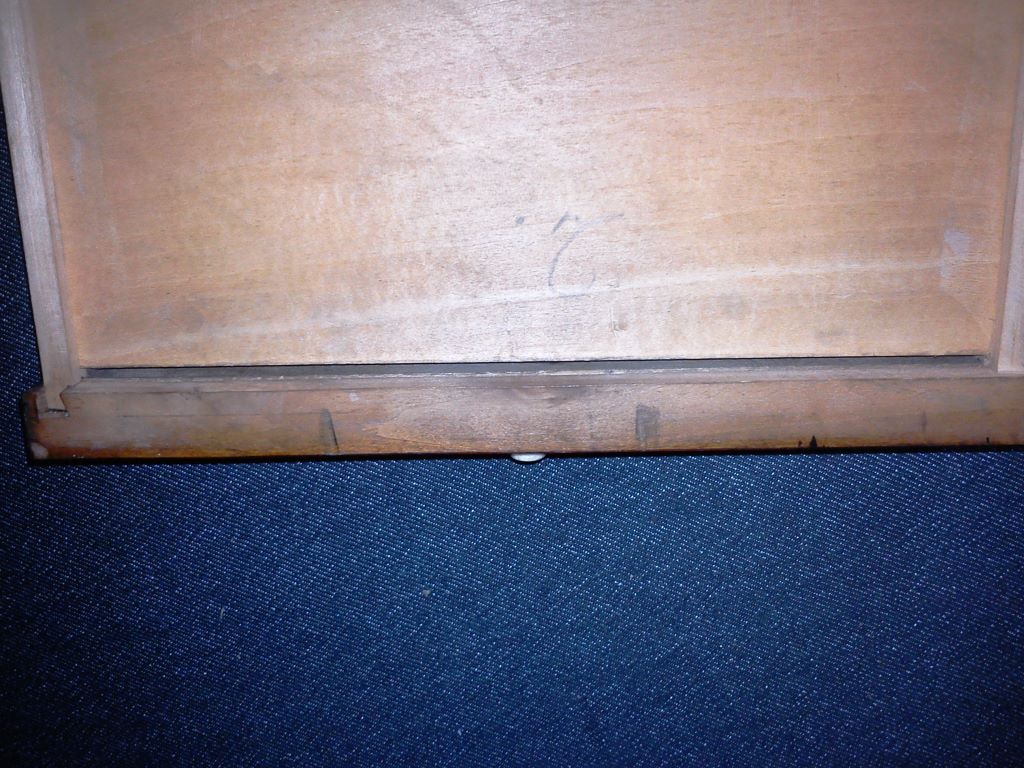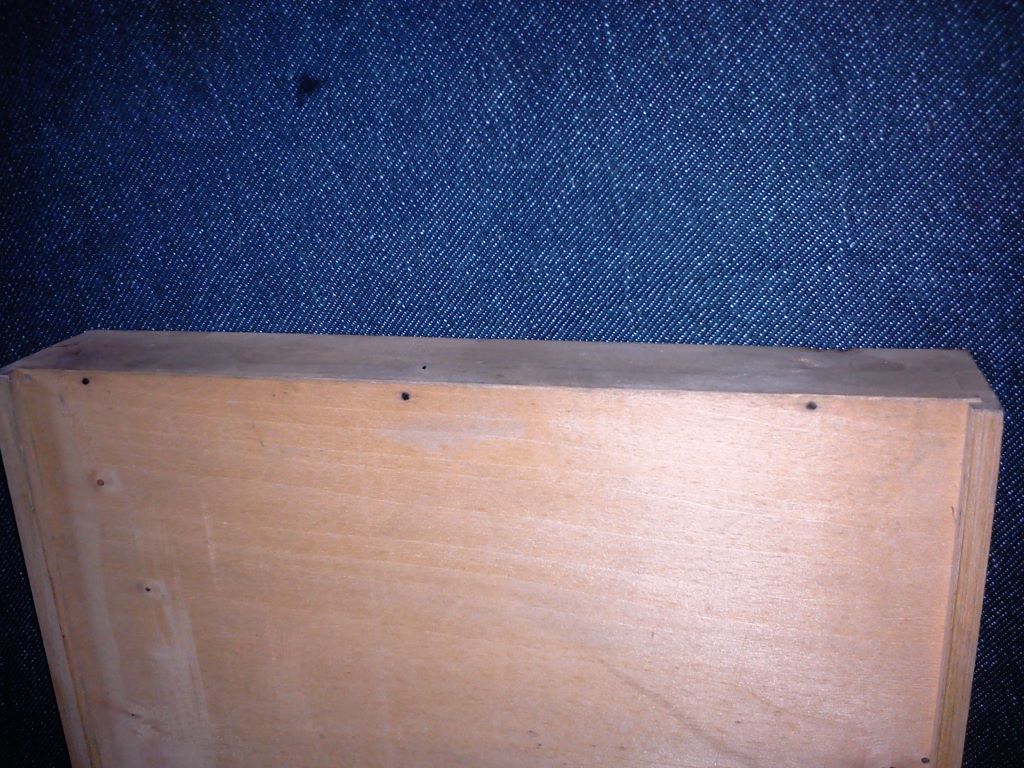Phlebas
Burbling Pixie
Some questions.
I have this secrétaire à abattant. Or fall front desk, as you will.

A runner for one of the internal drawers has been missing for some time. Luckily the solid wood trim part at the front has also been lurking about in one of the other drawers for a similar amount of time. It is at the bottom of the photo’.

So, no problems in planing a suitable piece of wood as a replacement, after having replaced the trim piece. But…
Should it just be a push fit? Or should I glue it (front, say, 100mm only – obviously the housing is cross grain). I don’t suppose it really matters, but I would like to know what would have traditionally have been done. No trace of glue in the housing, which might imply it was just pushed in. But, then again, that is why it might have fallen out.
And onwards.
Looking at the drawer in question, the base is in grooves, nailed at the rear. The front has shrunk back. Quite a lot as you can see. So far so good. Remove the nails, push it forward, re-nail and the job is done.

But if you look at the back of the drawer bottom, it is cut practically flush with the rear wall of the drawer. As I measure it the bottom sheet needs to come forwards about 8mm. The rear wall of the drawer is about 9mm. So,the resulting overlap of 1mm cannot realistically be nailed into.

Two things occur to me –
Attach a fillet (quadrant or similar) to the interior back of the drawer to nail up into (too many prepositions there, I know) through the existing repositioned drawer bottom. Or,
Remove the existing base and edge joint on a narrow strip to make it deeper.
The latter seems more faff, but, curiously, more satisfactory.
Or should I not be messing around with it at all, albeit I am told the piece is of no particular intrinsic value these days.
Any views, chaps?
I have this secrétaire à abattant. Or fall front desk, as you will.

A runner for one of the internal drawers has been missing for some time. Luckily the solid wood trim part at the front has also been lurking about in one of the other drawers for a similar amount of time. It is at the bottom of the photo’.

So, no problems in planing a suitable piece of wood as a replacement, after having replaced the trim piece. But…
Should it just be a push fit? Or should I glue it (front, say, 100mm only – obviously the housing is cross grain). I don’t suppose it really matters, but I would like to know what would have traditionally have been done. No trace of glue in the housing, which might imply it was just pushed in. But, then again, that is why it might have fallen out.
And onwards.
Looking at the drawer in question, the base is in grooves, nailed at the rear. The front has shrunk back. Quite a lot as you can see. So far so good. Remove the nails, push it forward, re-nail and the job is done.

But if you look at the back of the drawer bottom, it is cut practically flush with the rear wall of the drawer. As I measure it the bottom sheet needs to come forwards about 8mm. The rear wall of the drawer is about 9mm. So,the resulting overlap of 1mm cannot realistically be nailed into.

Two things occur to me –
Attach a fillet (quadrant or similar) to the interior back of the drawer to nail up into (too many prepositions there, I know) through the existing repositioned drawer bottom. Or,
Remove the existing base and edge joint on a narrow strip to make it deeper.
The latter seems more faff, but, curiously, more satisfactory.
Or should I not be messing around with it at all, albeit I am told the piece is of no particular intrinsic value these days.
Any views, chaps?









